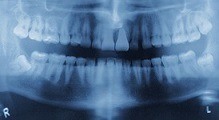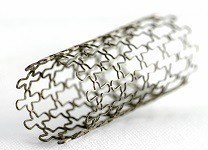Life Sciences: Overview
American Elements offers a comprehensive range of metals and alloys, organometallics, organic building blocks and other advanced materials to the applied life and medical sciences markets including biotechnology, medical devices, pharmaceutical, and dental industries.
#21: American Elements Invents New Rapid Dissolve Pharmaceutical Powder for Psychiatric Patients
Pharmaceutical and Drug Delivery
Chemical compounds and organometallics are routinely used as either active or inactive (excipient) pharmaceutical ingredients. Organometallics have been used in cancer therapies and nutrient deficiencies. Cisplatin, a platinum containing compound, and Titanocene Y, a titanium containing compound, are examples of organometallics used in cancer treatment. Cisplatin is used as a platinum-containing chemotherapy drug much like carboplatin and Oxaliplatin. The platinum containing compounds interact with DNA leading to programmed cell death or apoptosis.
Examples of inert excipient compounds include adhesives, capsules, or tablets used in the transport of active pharmaceuticals or nutrition supplements. Colloidal silicon dioxide or fumed silica is used as an excipient in soft gel capsules as a thickening agent. In addition, nanoscale polymers have been used as pharmaceutical or biomolecular vehicles for use in drug delivery and disease treatment. Many pharmaceuticals and chemical compounds used in medical treatments take form as lyophilized powders or nanopowders.
Metal Nanoparticles in the Life Sciences
 Gold nanoparticles or colloidal gold have been the focus of research using these particles to deliver therapeutics such as compounds for gene-regulation, high doses of standard pharmaceutical agents, imaging agents, and photo-responsive therapeutics. Targeted drug delivery is of particular valuable for use with pharmaceuticals such as chemotherapy agents, as ideally only the targeted cells will receive high doses of the pharmaceutical, minimizing the damage done to healthy cells and thereby limiting side effects.
Gold nanoparticles or colloidal gold have been the focus of research using these particles to deliver therapeutics such as compounds for gene-regulation, high doses of standard pharmaceutical agents, imaging agents, and photo-responsive therapeutics. Targeted drug delivery is of particular valuable for use with pharmaceuticals such as chemotherapy agents, as ideally only the targeted cells will receive high doses of the pharmaceutical, minimizing the damage done to healthy cells and thereby limiting side effects.
Silver nanoparticles have long been known for their antimicrobial properties and are used to coat surfaces to prevent infections. In addition researchers have used silver particles for staining subcellular regions and microscopy studies.
Magnetic nanoparticles are being studied for their applications in medical treatments and diagnostics such as cancer treatment and medical imaging. In one application, ferrous nanoparticles that have been designed to localize to cancer cells are placed in a magnetic field, generating significant heat and killing the targeted cells by localized hyperthermia.
Organic Synthesis
Chemical synthesis of synthetic organic molecules used in research and medicine typically involves a complex series of carefully controlled chemical reactions, often mediated by catalysts. American Elements provides a host of products for use in chemical synthesis and in the preparation of process reactions such as organometallic compounds, reagents, substrates, buffers, and metallic catalysts, in addition to our line of organic chemistry products.
Imaging and Radiotherapy
Fluorescent Markers and Dyes
The fields of imaging and radiotherapy use fluorescent markers and small molecules such as dyes to visualize specified targets such as cells, proteins, or other compounds. These markers are prepared in solution and often involve binding to biomolecular compounds that act to shuttle the markers to in vivo or in vitro targets. Examples of commonly used stains and dyes used for imaging in microscopy include lead acetate, nitrate, tartrate, citrate, lithium carbonate, bismuth nitrate, and indium chloride hydrate.
Stable Isotopes
Stable isotopes are used in nuclear magnetic resonance analyses, magnetic resonance imaging, and spectroscopy and proteomics research. Common products for these applications include carbon, nitrogen and deuterium isotopes.
Instruments
High Purity Medical Grade Metals and Alloys
High purity medical grade metals and alloys are vital to the biomedical industry. Metals and alloys such as titanium, stainless steel, gold, and silver are routinely used for a number of applications involving medical instrumentation and devices. Titanium, for example, is commonly used in medical implants. Silver is routinely used in dental amalgams, and gold or platinum have been used in eyelid implants.
Antimicrobial Treatments
Both silver and copper have intrinsic antimicrobial properties that are frequently used in medical settings. Copper alloys such as brass are commonly used to prevent microbial growth on frequently touched metal objects such as doorknobs in hospitals, while increasingly silver coatings or embedded silver nanoparticles are used on surgical instruments and various medical consumables.
Laser Therapy
Solid-state lasers utilizing specialized crystalline materials as gain media are routinely used in dermatological procedures in addition to other noninvasive medical procedures.
Medical devices and diagnostic equipment
Diagnostic equipment used to measure metabolites, muscle or brain activity generally rely on metal, ceramic and alloy components for a number of their functions and features. Circuits, electrodes, tubing, surfaces and insulators make up some of the components currently incorporating these materials.
Thin film and disolvable batteries
Thin film batteries provide flexibility in size and shape enabling convenient incorporation into devices. The batteries have applications in numerous medical products such as implantable devices and wireless diagnostics. Lithium ion thin film battery technology has proven robust performance and reliability in pacemakers, defibrillators, and neural stimulators.
In addition, recent studies in biomedical engineering are testing the use of biodegradable batteries and medical devices. Several applications for dissolvable technologies include injectable or ingestible medical devices, drug delivery devices and semi-permanent implants. Dissolvable batteries and devices can reduce exposure of living tissues to toxicity from alternative non-biodegradable devices.
Low cost portable consumer devices, imaging and ultrasound systems
Portable biomedical devices and sensors coupled with software and mobile applications are finding uses as consumer products including measuring vital signs, blood glucose, stress levels, sleep and more. Furthermore, portable point of care devices and diagnostics such as ultrasounds and imaging systems are being developed by major consumer products firms. For example, General Electric and a number of other manufacturers are marketing portable sonography devices. Wire-free portable devices require smaller components and materials with flexible properties. Device casings, screens, screen coatings, device circuitry, and/or tubing typically incorporate metals, alloys, and ceramic materials. New research in the field of sonography is investigating new materials or metamaterials for improving image quality derived from ultrasound procedures. In another exemplary application, a wearable electronic skin device comprised of titanium-gold particles is used to store data and deliver drugs to a patient.
Dental/Craniofacial
 Numerous biomaterials are applied in dental procedures and in craniofacial tissue engineering and reconstruction. Examples of such applications are found in dental amalgams, degradable implants, and skeletal tissue reconstruction. Dental amalgams are dental filling materials used to fill cavities where tooth decay has occurred. Magnesium alloys have recently been tested as a potential biomaterial for degradable implants such as craniofacial screws. Hydroxyapatite cement is used as a biomaterial for craniofacial skeletal tissue reconstruction.
Numerous biomaterials are applied in dental procedures and in craniofacial tissue engineering and reconstruction. Examples of such applications are found in dental amalgams, degradable implants, and skeletal tissue reconstruction. Dental amalgams are dental filling materials used to fill cavities where tooth decay has occurred. Magnesium alloys have recently been tested as a potential biomaterial for degradable implants such as craniofacial screws. Hydroxyapatite cement is used as a biomaterial for craniofacial skeletal tissue reconstruction.
American Elements has a history of providing solutions for the dental industry and continues to deliver high quality products while supporting innovation and discovery in the dental healthcare market.
Ophthalmic
Contact lenses
Traditional contact lenses are made of gas permeable, flexible materials such as silicone or acrylic materials. With the advancement of thin film transistors and flexible electronics, one potential application could be for "smart" lenses.
Glaucoma management
Glaucoma is frequently an age-related disease leading to increase pressure and fluid buildup in the eye due to the breakdown of tissue that is responsible for regulating eye fluid drainage. Recent work in glaucoma treatment at UCLA is focused on using nanodiamonds for delivering the glaucoma drug timolol maleate to the target site.

Stents
Stents are mesh tubes used as implants to treat narrow or weak arteries. Materials such as gold, tantalum, Nickel Titanium Alloy, silicone, and polymers including polyesters, polyorthoesters and polyanhydrides have been used for stents. Titanium based stents are commonly used in angioplasty procedures.
Sensors, Biochips, MEMs
Biological sensors include sensors capable of detecting biomolecular analytes such as cells, protein, and nucleic acids. Both in vivo and vitro applications utilize biosensor technologies. Biosensors have vast uses in clinical medicine, diagnostics, defense, environmental studies. These technologies present opportunities to perform sophisticated analyses with relatively low cost and small volumes of sample materials. A variety of technologies are available for biosensing including biochips, microfluidics devices, and microreactors.
Biochip or lab-on-a-chip technologies (also known as microarrays) are high throughput tools that enable studying thousands of biomolecular or small molecule interactions on a single surface. Surface coated or functionalized glass slides are frequently used for biochip applications. Researchers are now using the tool to discover new drugs, diagnose illness, identify biomarkers, capture cells, and analyze the proteome. Common lab-on-chip technologies incorporate fluorescence tagging to quantify binding events depending on the specific biomolecular interaction is being studied.
Biological microelectromechanical systems or Bio-MEMS are small devices in the 20-1000 micrometer range often comprising individual components. The study of BIO-MEMS involves several areas of research and development. One area is concerned with microfabrication technologies suitable for biological systems others include the application of Bio-MEMS in clinical medicine where studies have concentrated on the use of microneedles, microsensors, microreactors and microelectrodes.
Regenerative Medicine
The field of regenerative medicine is developing new methods that apply materials for grafts, skin repair, tissue engineering, artificial tendons, cartilage, and bone. Bone repair commonly involves screws, plates, or temporary stabilizers that can include stainless steel or titanium screws and hydroxyapatite or tricalcium phosphate for bone repair. Nanocomposites such as cellulose nanofiber based composites are being investigated for use as artificial tendons and ligaments. Polymers matrix nanocomposites are also being tested for tissue repair, skin repair, and tissue engineering applications.
Food, Agriculture, and Environmental Safety
Food additives include food grade compounds such as acids, emulsifiers, humectants, flavor enhancers, color retention agents, sweeteners, nutritional additives, anti-caking agents, vitamins, dairy ingredients, chelates and other chemical compounds or organometallics. Chelates and anti-caking agents manufactuted by American Elements include calcium disodium EDTA, magnesium disodium EDTA, sodium aluminosilicate, sodium ferrocyanide, and potassium ferrocyanide.
Of particular importance to industries such as agriculture, environmental remediation involving monitoring and removal of heavy metals and other pollutants from water and soil routinely uses compounds including stable isotopes, precious metal catalysts, metal oxide nanoparticles, porous and mesoporous materials, and metal-organic frameworks (MOFs). For example, petroleum contamination remediation may involve using activated carbon, porous carbon and carbon based nanomaterials in addition to other chemical reagents and filters to decrease groundwater contamination. Additionally, mesoporous silica and surfactants are routinely used in aquifer or water remediation.
American Elements manufactures a comprehensive catalog of high purity materials for the field of life sciences. We produce materials in various grades including ACS, Reagent and Technical Grade; Food, Agricultural and Pharmaceutical Grade; Optical Grade, USP and EP/BP (European Pharmacopoeia/British Pharmacopoeia) and follow all applicable ASTM testing standards. Materials can be manufactured customer specifications for particle size, purity, and composition in all amounts including bulk quantities. Our offerings include metals and alloys, chemical compounds, organometallics, ceramics, nanoparticles, and other advanced materials.